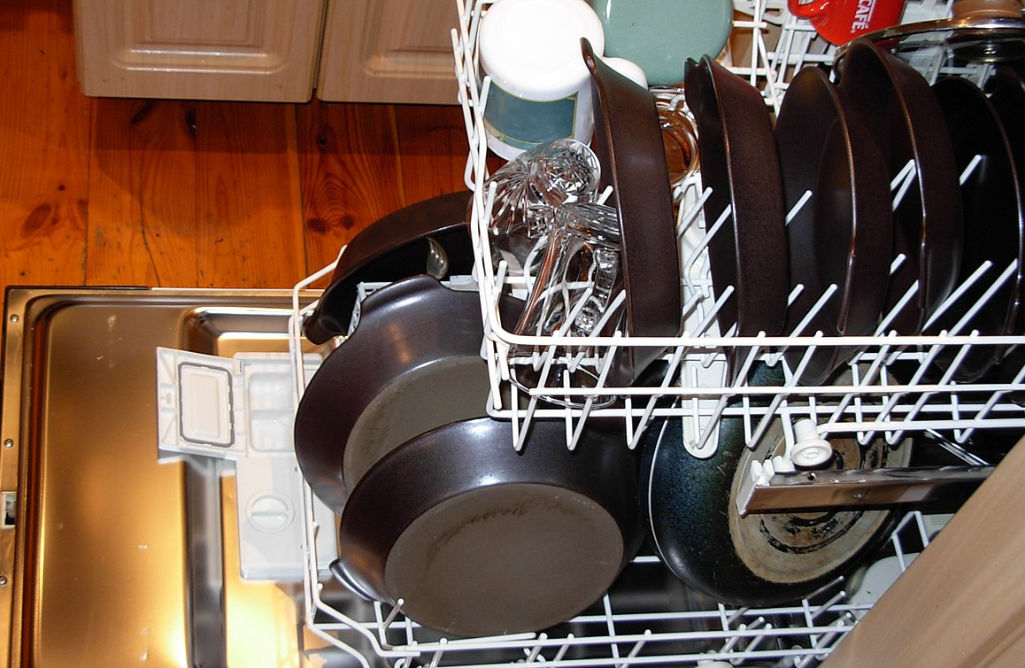Family squabbles, we all get them every now and them. Who should get the remote control? Should the toilet paper roll go forward or backward, or what is the best way to press a toothpaste tube. This small insignificant argument can cause serious issues in some cases.
Fortunately, some of them have a simple way to go about them. And everybody wins at the end of the day. One of the oldest couple arguments of all time is if it is actually right to throw the dirty dishes into the s=dishwasher without rinsing them first.

Why don’t we just bring in the experts to answer that question for us once and for all? You will be surprised to hear that you can actually throw in the dishes into the machine without rinsing them. According to Morgan Bashear, a scientist that works for Cascade, “ it’s actually more beneficial to not rinse our dishes before putting them in the dishwasher.”
In a recent article posted in the Wall Street Journal, he gave the highlight of a not-so-popular feature that can be found in most modern dishwashers which is a smart sensor that enables the machine to decide how long to run each cycle and which temperature to use based on the plates that you feed into the machine. Even at the same settings, the machine will still run different cycles for the plates depending on what you feed into the dishwasher in the first place.
The sensor is able to detect any loose food crumbs or sauce in the plates during the pre-wash cycle. And the amount of the loose materials it finds is quite important to get the dishes cleaned up.
According to Brashear, “If you pull a helicopter cleaner and rinse all of your dishes […] nothing will come off in the pre-wash.” While you might be thinking leaving less on your plates by rinsing it first will make it cleaner, Brashear says it doesn’t always work that way especially when you have a machine full of rinsed plates and you have one of them a single casserole dish that is cheese crusted along with the rest in the washer. The sensor will not be able to clean the dried off food effectively since it will be cleaning based on the settings required to clean the rinsed plates and will not be suited to clean the dried off food on the casserole dish.
Now you know where the crusty tray you found in the rows of perfectly clean plates came from. You don’t have to be bothered about your machine’s capabilities to handle unrinsed plates, because it is designed to do so. According to a recent survey, most of the machines from the past five years or even expensive models from an earlier period are well suited to handle big crumbs safely without breaking down.
If there is any precaution at all to take is you remember to clean the filter on a regular basis and ensure that you scrape off any food chunk that you think is too big. You will also be glad to find out that asides being saving time, you are also saving yourself some money and precious water. By not pre-rinsing you are actually saving up to 20 gallons of water per load. It is safe to allow your machine do the hard work for you, the only thing you have to do on your part is to clean up the machine regularly to prevent it from getting clogged up with food crumbs and soap scum. It could also become a breeding ground for germs if not properly cleaned. Hence it is recommended that you clean up at least once a month.
To clean up your machine, by cleaning the drain under the dish rack by hand, you can also sprinkle some baking soda across the bottom them rinse it off to clean away food stains and bacteria. If you are having a case of a bad smelling dishwasher, you can get rid of the odor in two simple ways.
You can leave a cup of vinegar in a container on the top rack of the dishwasher and run it on a warm cycle. The water will mix with the vinegar and clean out your machine instantly. You don’t even have to scrub it afterward. The other way is to pour some Kool-Aid powder into the machine when it is empty and let it run out instead. It will leave your machine with a fresh fruity smell.

As bonus information, in case you didn’t know before, your dishwasher can actually do more than just wash dishes. It can be used for cleaning just about any item in your homemade of plastic. From bathroom wastebaskets, pet bowls, small gardening tool, vacuum brush, toothbrush cups and even your flip flops or runners. You can even toss in your baby’s toys to clean it up and get rid of germs.
Just make sure you run the machine on a cold cycle and don’t turn on hot drying when you are done or the plastic items will get melted. And we wouldn’t like that, would we?

